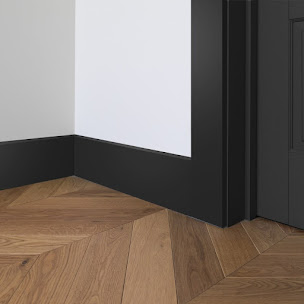How Do Anti Slip Stair Treads Improve Safety?
We look at the importance of outdoor stairway and step design in preventing slips and trips. During the winter months, slips and accidents on exterior steps and stairways are more likely, especially due to potential environmental risks such as poor light, rain, and ice. Anti Slip Stair Nosing increases the degree of safety in your building in two ways. To begin with, they increase step edge visibility. The anti-slip grip's tint contrasts with the stair tread's substrate, clearly defining the step-edge. Many anti-slip stair nosing’s have a photo luminescent strip that improves step-edge visibility, particularly in low light. Installing stair nosing protects the stair tread from wear and strain, extending its life. The robust substance of stair nosing distributes the impact force throughout the whole stair tread, reducing future maintenance and replacement expenses. When assessing safety, both external public and workplace spaces must be taken into account. Employees, visitors, and customers might all be affected by slips on exterior steps or stairways. When designing stairs and stairways, keep the entire design in mind.
A Stair Nosing is merely a protrusion from the stair's edge that produces contact between both the bottom of a shoe and the stair's top. The grips can be formed of a variety of materials, and they are meant to prevent slipping when using the steps. Stair grips are cost-effective, which is an advantage to the building owner. Nosing is simple to place on existing staircases, reducing the need for extensive repairs or completely new steps. The nosing is installed by laying it over the old step and fixing it in place. Stair nosing may be made out of a variety of anti-slip materials. This diversity allows facility operators to choose the material that best suits their needs. High visibility choices are available in addition to the typical grip material used in stair nosing. These assist buildings to comply with numerous safety rules by making the edges of the steps apparent to those using them. Non-slip fabric that glows when a light source is withdrawn is also available, making navigating stairs easier during power failures and emergency circumstances. We are treading and nosing for new and old employment. When a screwed-down stair nosing gets worn or broken, the product is readily changed; just remove the old nosing, scrape off the old adhesive, and apply a fresh layer, then fix the new product in place. This eliminates the need for extended stairway closures, which might be dangerous. Step lights should be put on steps in dimly lit places to prevent individuals from mistaking where the staircase edge is. The entranceways to the steps must likewise be adequately illuminated. To avoid an accident, people must be able to perceive that they are nearing steps. To establish the direction in which the foot will be put on each step, the edge of each step must be seen. A highly noticeable color difference on the top of the step surface might emphasize this.




Comments
Post a Comment